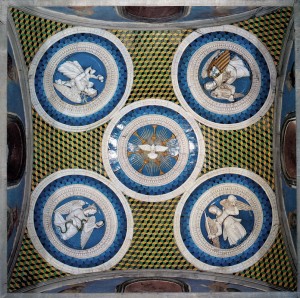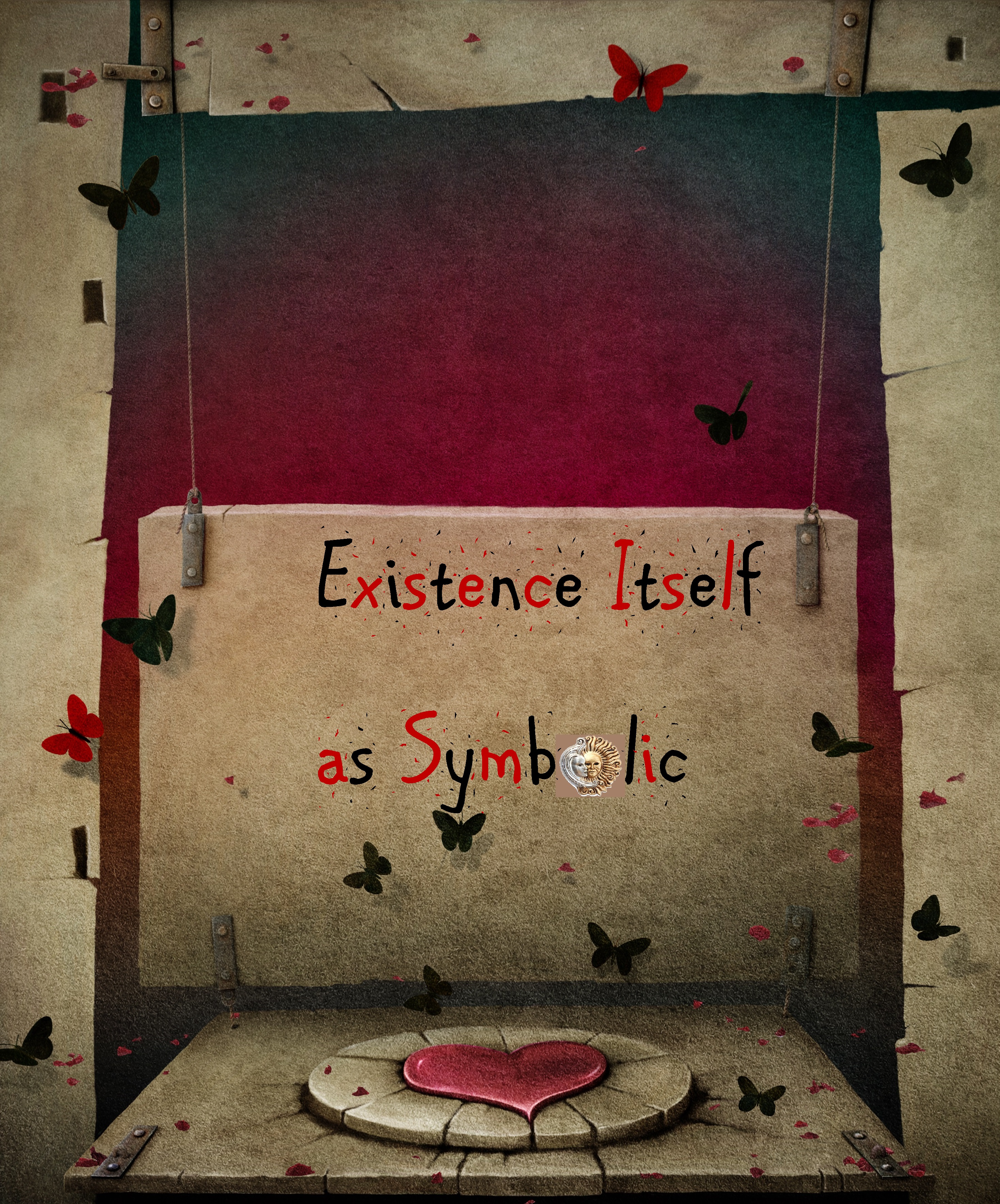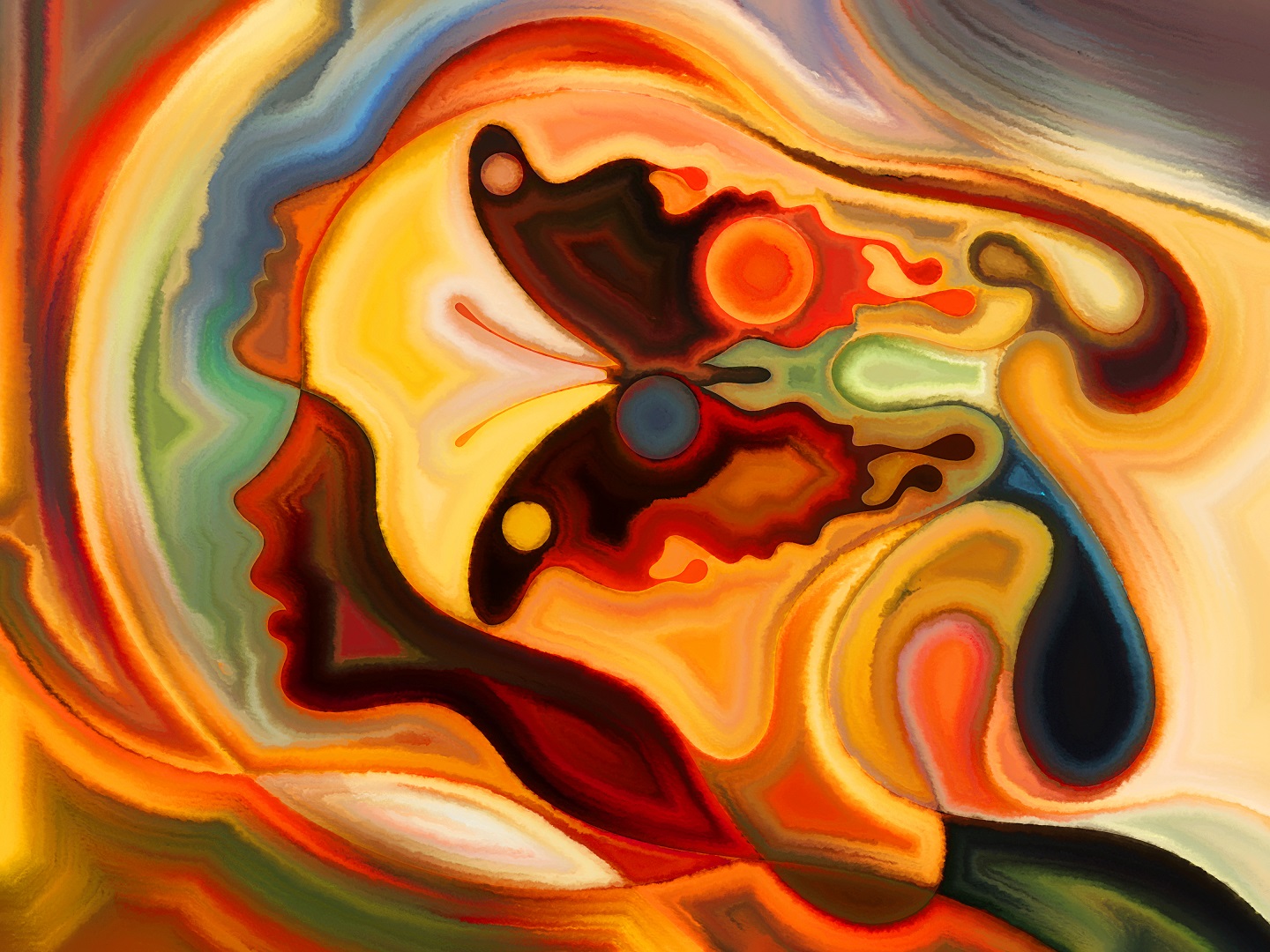
Just like their pagan forebears and contemporaries, the Gnostics usually wore jewellery and used various implements for talismanic purposes. These may have been apotropaic in nature, or alternatively, they may have hoped to draw desired people, circumstances or energies to themselves through cosmic sympathies and analogies. Yet another possibility is that they were used to remind the owner that gnosis was the only agent of salvation in the cosmos, the only viable way that the human pneuma or spirit could navigate through the seven dimensions and reach that much desired state of rest or repose known as anapausis in the realm of mystical plenitude, the Pleroma.
Whilst it remains certain that many ornaments of this type once existed, few have actually come to light. An enigmatic one was described in some detail by second century Christian Alexandrian scholar and theologian Origen in his treatise Against Celsus for the sake of repudiating a heinous attack made on Christianity by the pagan philosopher Celsus. According to Origen himself, the diagram in question encompassed a ritualistic purpose and was used by the Gnostic sect of “Ophites” or “Ophians” to aid contemplation of the soul’s journey through the seven planetary spheres. In the pictorial representation, the omnipresent and all-encompassing anima mundi or World Soul that infuses all created Nature with life force was represented as a great uroboric serpent named Leviathan. In all it appears that Leviathan was represented twice; once as a large circle connoting the soul of the universe and once on the outer perimeter of the whole diagram as a serpent swallowing its own tail. Moreover, the circle of Leviathan also contains a vertical alignment of ten smaller circles that connect with but do not interpenetrate one another. The totemic arrangement into a vertical ladder where the circles might represent individual rungs on the cosmic monochord brings to mind a universe mapped out by Neopythagorean and Neoplatonic systems of thought. If an implicitly interpretation of this sort is valid, then each of the ten smaller circles are merely stand ins for the sphere of the fixed stars and zodiac, the primum mobile or source of the heavenly rotations, the seven planetary provinces with their presiding archons, and finally the earth with its elementary composition of water, earth, air and fire which combine to form the animal, vegetable and mineral realms.
After demarcating the cosmic terrain as envisioned by the Gnostics, Origen names the seven archontic angels which imbue the seven planetary realms with life force. On the uppermost echelon of the diagram is Michael in the theriomorphic guise of a lion, followed in descending order by Suriel as a bull, Raphael as a serpent, Gabriel as an eagle, Thauthabaoth as a bear, Erathaoth as a dog and Thaphabaoth or Onoel as an ass. These emanatory powers are juxtaposed by seven evil archons standing sentry at each of the seven gates–Yaldabaoth, Iao, Sabaoth, Adonai, Astaphaeus, Ailoaeus and Horaeus. It was the job of the seven salient and evil archons to test the soul’s acquisition of consciousness, and specifically its intimate acquaintance with salvific gnosis. At each of the gates, the soul was required to remit knowledge of the archon’s respective seals and signs as well as direct a series of prayers towards it before being allowed to continue on its pilgrimage back to the Pleroma. If it disclosed correctly it was allowed to pass. Alternatively, if it answered incorrectly or pleaded apathy to the cause it was doomed to meander about the cosmic spiral in a state of turmoil and distress like the daughter of Pistis-Sophia, who, in descending to rescue humanity from Yaldabaoth’s plotting became incarcerated in the chaotic realm of darkness spun by the evil archon and henceforth suffered the condition of being unable to remember her divine mission and identity.
There can be no question that the ascribed rulership of daemons to each of the seven planetary realms as well as the passwords, the seals and signs needed to traverse them was the result of the Gnostics’ intimate acquaintance and reworking of eschatological deductions and practices that were quintessentially Egyptian. In an Egyptian demotic papyrus dating to the first or early second century ce, a funerary composition titled the “Second Letter for Breathing” audaciously exposes how precariously hinged upon the pantheistic Egyptian religion the Gnostic endeavour actually was. Whilst this Egyptian document is a contemporary of the variegated Gnostic movement, we can be confident that the composition itself is of a far greater antiquity given that identical conceptions of the Amenti (Afterlife) and the Underworld appear at the Osireion in Abydos, a temple-complex thought to predate Narmer’s unification of Upper and Lower Egypt in c. 3100bce. From this it becomes apparent that eschatological beliefs and practices in Egypt developed and crystallised during the early dynastic periods and remained quite stagnant and unwavering thereafter.
In what can only be described as a supernal personification of the death and rebirth journey, the demotic text equates the long winding and perilous passage leading to the Amenti with a pilgrimage through seven coffins made of sycamore wood as well as gold and silver from the mountains. Here, the hulk of wood, the seven sarcophagi or ‘flesh-eaters” enclosing the body of the deceased form a rebirth vehicle enabling the individual soul to traverse the celestial body of Nut or the “Lady of the Seven” Hathor (either goddess fulfilled the role of the Great Mother) and reach its intended destination, the highest vault of the heavens, the Empyrean of the Great Mother Goddess. Closing the funerary composition is a magical incantation which reads: “To you comes the stone, to you comes the stone… To you comes the Great-of-Magic… To you comes the body which goes forth from the mountains…” Save for revealing the mysteries of birth, death and rebirth to have been an entirely feminine affair, these scant lines offer a glimpse of esoteric motifs that underran the pantheistic stream of Gnosticism in late antiquity and subsequently poured themselves into an alchemical movement of the Middle Ages whose chemical and philosophical processes were supposed to facilitate an elusive quest for the Philosopher’s Stone (or the Elixir of Life).
As the World Tree was sometimes depicted in an inverted state with its colossal roots in the skies and its branches deep inside the earth, so too do we find that in Egyptian eschatology the upper echelons of the celestial vault and the subterranean Underworld were not only interchangeable but one and the same. When the sun god Re was swallowed by the sky goddess Nut at the conclusion of each day, he was required to embark upon a perilous journey that involved traversing the twelve nocturnal provinces of her body on a golden barge. These twelve provinces were merely stand-ins for the twelve hours of night and formed the precipitous terrain of an imperceptible Netherworld which sought to bridge the dual concepts of west and east, evening and morning, death and resurrection, and so forth. Each province or hour was guarded by a fearsome deity who unlocked the gate leading into the next with a secret password after overseeing the completion of mandatory ritual acts associated with her particular domain. The gateways, gatekeepers and the Underworld itself, imagined as the celestial body of the Nut goddess, were all perceived to be female.
Returning momentarily to the issue of talismans, Celsus purports that the enigmatic diagram played a fundamental role in an “Ophian” ritual called “The Seal” in which a didactic or instructional dialogue unravels between an important teacher so-called “Father” and his pupil regarding the seven archontic angels and the seven angels of light. The use of the word “Father” here is interesting for it recalls the loyalist tradition of instructional literature in the Egyptian tradition where a father fulfils the role of mentor in imparting valuable knowledge and wisdom to his son regarding a code of morality and ethics that was itself embodied by Egyptian maat, a principle corresponding to the modern-day notion of universal order and harmony. Texts such as The Maxims of Ptahotep, The Teaching of King Amenemhat I for his Son Senwosret and The Instruction of a Man for His Son all belong to a surviving compendium of wisdom literature of this kind and predate their Gnostic equivalent by at least twenty-two centuries. Motifs in the Gnostic cosmological instruction mentioned by Celsus are also present in a second century demotic papyrus from the Faiyum in Middle Egypt in which a dialogue unfolds between the Egyptian god Thoth and a pupil styled “He-who-wishes-to-know”. In the text Thoth cautions his protégée that the seven fields which stand between eternal life and non-existence are rife with danger. He also mentions that the key to successfully traversing the ethereal yet deceptive landscape which leads to the ancestral life-bestowing river-source lies in attracting to oneself a female entity named “Foremost of the Mouth” and beguiling her into opening the first gate. Once again the surviving cosmographical and mythological treatises unapologetically disclose a situation whereby the concept of regeneration and the mysteries of rebirth were regarded wholly feminine affairs, a train of thought which had existed in human consciousness for time immemorial.
The aspects of feminine aesthetic consciousness just mentioned–the idea of the celestial goddess as a sweeping womb that ordains the destinies of her mortal children–recalls the numinous functions of the Canaanite mother goddesses Asherah and Astarte, as well as the Hellenistic Aphrodite, the goddess of love who was usually depicted riding a dove-drawn chariot across the ethereal skies of Mt. Olympus. The dove itself has been adopted and assimilated into the religious and mythical iconography of many cultures worldwide, though its ubiquity in nearly all traditions as a divine embodiment of love and peace betrays an original connection with Aphrodite, the goddess who carried as her birthright memories of the original unbounded wholeness that the differentiated aspects of nature could resynthesise through the agent of love. When Gnostic writers were scrying the multifarious philosophical brew simmering beneath the fires of Egyptian, Hellenistic and Sumerian esoteric spirituality in Alexandria to formulate their mythologems, they intuitively recognised Aphrodite’s dove symbol and connected it with their own incarnation of divine wisdom in Pistis-Sophia. Proceeding along a line of logic completely indigenous to their Neoplatonic forebears, the Gnostic thinkers perceived the endeavour of the soul’s return to the androgynous source, the Empyrean, to be mediated by love, and love, whether divine, platonic, romantic or otherwise, had to be straddled by wisdom otherwise it degenerated into little more than a sightless, unfixed and calamitous virtue.
Wisdom then, an indispensable tool of salvation, formed the central pillar of the archetypal feminine on the Gnostic cosmological totem pole. In what could be interpreted as a disappointment to linguistics, the modern English language lacks grammatical gender when it comes to nouns so there can be no way of discerning whether the word “wisdom” was formerly classed masculine or feminine. All the same we can orientate ourselves by looking at the historical and linguistic terrain crisscrossed by the word and the associative image in question. In the band of older languages that were used by the heterogeneous Gnostic communities thriving in Alexandrian Egypt, the Mediterranean and the Near East during late antiquity, the word carried the feminine gender. In Hebrew the feminine image evoked by the noun was retained in Hokmah, whilst the Greek and Latin preserved it in Sophia and Sapientia, respectively. The connection between the Holy Spirit of Wisdom and the divine feminine was severed when the Christian Gnostics and the early Christian theologians assimilated the former into their Logos of the True God in Jesus Christ. By ejecting Pistis-Zoe from mythological discourse as rectifier of a hapless situation of mortal ignorance and replacing her with a male saviour, the image of wisdom underwent a transformation into an abstract ideal whose gender was neuter. In Koine Greek, the language through which Christian ideology and scripture first found its voice, the Holy Spirit was known as the Hagion Pneuma, a transitory image clothed in the neuter gender but whose presiding symbol remained the dove of the mother goddess. The transformative journey carrying the word over to a distinctly masculine Godhead culminated with a Latin translation which dropped the neuter in favour of the masculine gender, and the Hagion Pneuma became Spiritus Sanctus.
In retrospect, what the edicts of Christianity essentially did was to relegate the mother goddess by winnowing down the mythological connection between the aesthetically feminine, the dove, divine light and wisdom, a syncretisation of symbols which had sustained the numinosity of a triune female Godhead for thousands of years. Once these symbols had been withdrawn and subsequently reassigned to newly conflated aspects of a triune masculine Godhead, memory of the Great Mother Goddess as formative force, cosmic womb and progenitor of life, death and regeneration faded from collective consciousness. The Gnostic sects did in fact retain the ancient connection to some degree, though it vanished from consciousness when the self-declared orthodoxy of the Catholic Church denounced them as heretics and proceeded to decimate their communities and written records at a rate that would have impressed Hitler himself. Once the subjugation was complete, it would have only been a matter of time before the radicalised yet extraordinarily powerful discourse in the New Testament tinted knowledge with premises favouring the masculine and the Spirit over the feminine and Mother Nature, an ideology which would ensue in far-reaching cultural and political consequences for European civilisation and to some degree, civilisation as a whole.









